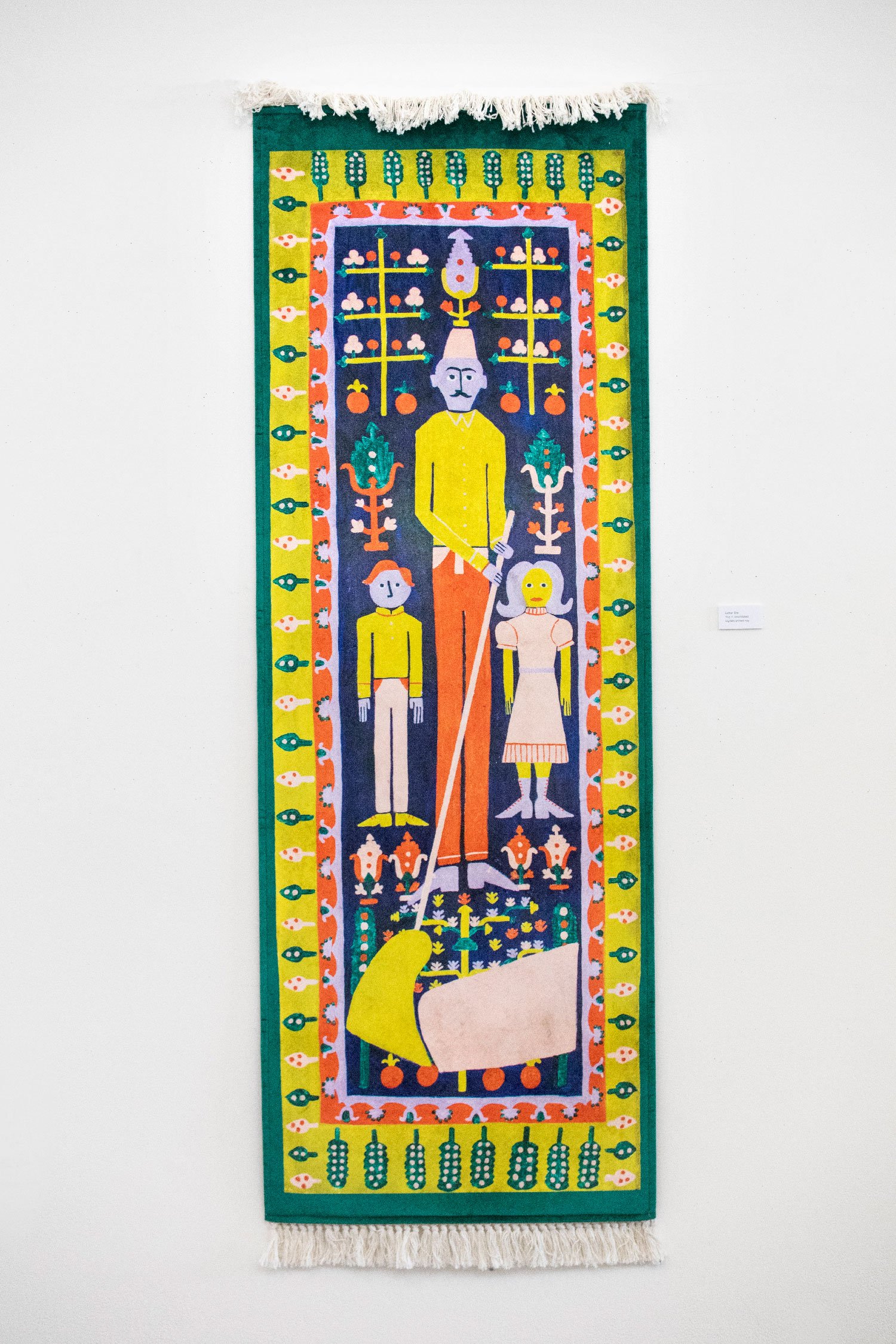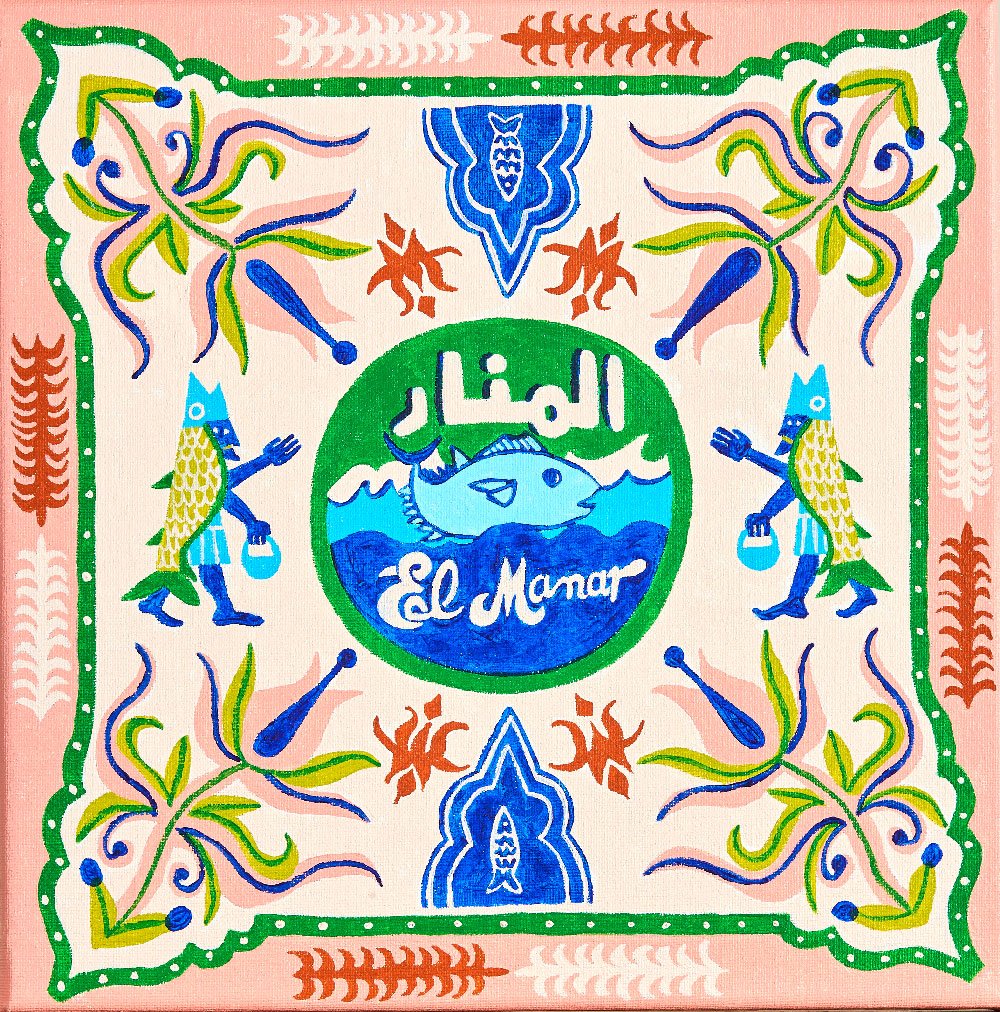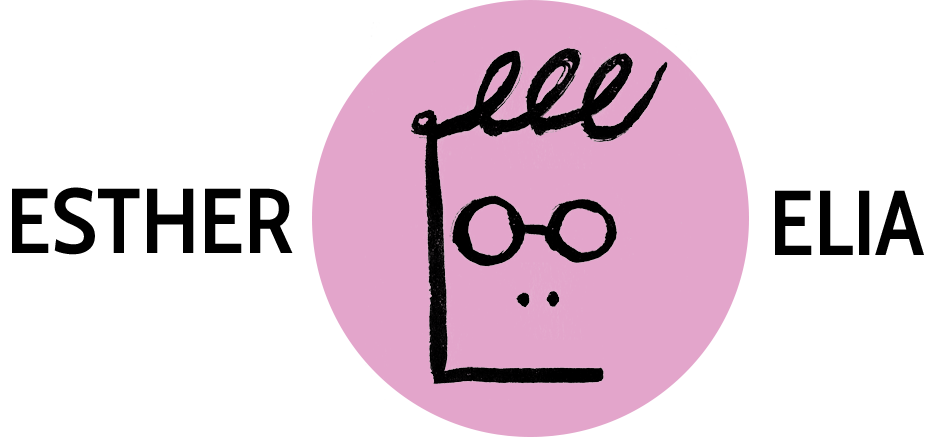Khulta d’beta
A solo exhibition by the artist held at Park Life Gallery in San Francisco, California from June 26-August 2, 2020. Khulta d’beta roughly translates to “home food” or “food of the house” in the Assyrian language. This series of paintings is a deep dive into the Assyrian identity through the Assyrian grocery stores and markets Elia grew up shopping at in her birthplace of Turlock, California.

Rug 1: Hiding | 25x36 in. | Acrylic on canvas | 2019

Rug 2: Fleeing | 50x50 in. | Acrylic on canvas | 2019

Rug 3: Hidden | 25x72 in. | Digitally printed rug | 2019

Shish Kabob | 50x29 in. | Acrylic on Canvas | 2020

Rizza, labneh, o sour cherry jam | 26x39 in. | Acrylic on Canvas | 2020

Pomegranate Juice (fresh) | 24x36 in. | Acrylic on Canvas | 2020

Chai | 23x23 in. | Acrylic on Canvas | 2020

Lavash with maast o khyar | 23x23 in. | Acrylic on Canvas | 2020

Dolma 3: Flipping the Dolma | 12x12 in. | Acrylic on Canvas | 2020

Dolma 1 | 12x12 in. | Acrylic on canvas | 2020

Chicken Lily | 10x24 in. | Acrylic on Canvas | 2020

Dolma 2 | 12x12 in. | Acrylic on Canvas | 2020

Tuna + Daigon | 12x12 in. | Acrylic on Canvas | 2020

Rose Water | 9.5x29 in. | Acrylic on Canvas | 2020

Pistachio Saffron | 12x16 in. | Acrylic on Canvas | 2020

Olive Oil | 20x28 in. | Acrylic on Canvas | 2020
From the Show Description:
Assyrians are a people without a country, a minority group indigenous to modern-day Turkey, Iran, Iraq, and Syria. Linguistically, the Assyrian culture and language has become increasingly more of a Middle-Eastern creole— mixing in each dominant group’s language and customs to the point where a new “mother-tongue” was created. To be Assyrian is to house the history of every occupation since Assyria ceased to exist, speaking to the determined adaptability this minority group has maintained for centuries. To speak Assyrian is to speak the history of the Middle East. The Assyrian grocery store therefore became a library and history lesson for Elia through its shelves, showing the diversity of the Middle-East and the role of Assyrians in preserving this unique mix. However, in the last century Assyrians have increasingly had to vacate their indigenous lands due to religious persecution and genocide, and with this expanded diaspora in mind, Elia documents cultural changes through the food. Her paintings reveal how her family’s recipes have changed, specifically with their move to California — jalapeños, salsa, and El Pato became essential ingredients to their Assyrian recipes. She creates patterned rug-like paintings based on recipes that reflect the multiple cultures that have influenced Assyrian cooking. For her, they are a reminder of the many homes that exist to children of diaspora, as well as the comfort in change — it means you and your people still exist. Much of Elia’s work deals with the sense of loss that comes with being Assyrian, especially in regards to the forced immigration her family experienced during the 1915 Armenian, Assyrian, Greek Genocide. Her pieces continue to center around the home and furnishings of the home as a direct salve to the loss of the indigenous home. This show is an ode to the Assyrian grocery store — it serves as a space to swap recipes, stories, and provide any and all furnishings for the Assyrian home and lifestyle. Everything needed to provide nourishment for the body and spirit, and in many ways the only directly transplanted remnant of the homeland.
